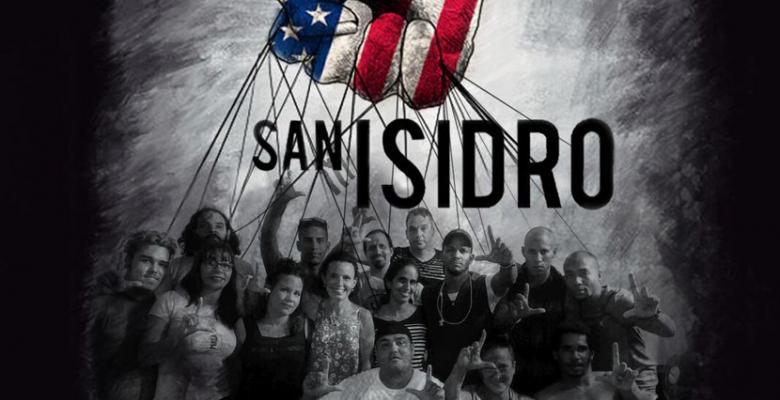Cuba and the failure of Color Revolutions’ attempts
especiales

This story begins when the CIA, obsessed with controlling the human mind, sacrificed people by implanting miniaturized antennas inside individuals’ brain in order to receive orders by radio or by applying electric shocks to them, according to the MK-Ultra Project —today declassified and all over the Internet.
But they only got close to such results, without needing to open people’s brain, when they developed new procedures of cultural and psychological war 70 years ago with another Project under the codename Qkopera, according to the British researcher Frances Stonor Saunder in her paper The CIA and the Cultural Cold War.
Allen Dulles, Director of the CIA (1953-1961), was the mastermind behind the plan to operate on the other nations' culture and intellectuals and so be able to face the growing influence of the USSR and socialism, in the already destroyed Old Continent soon after the end of WWII in 1945.
In 1950, it was founded the Congress for Cultural Freedom (CCF), parent institution of a wide web of cultural undercover operations, with branch offices in 35 countries. They hired and used thousands of people including artists, intellectuals, and journalists, as well as publishing houses, news agencies, art galleries, art museums, and all sort of cultural institutions aimed at replicating in a cultural format, the geopolitical interests of the United States.
Such display of alleged cultural activism was funded with almost unlimited money from the government and with the financial aid of the U.S. for the rebuilding of Europe after WWII.
They collaborated with devotion with the plans of the U.S. special services and the main agencies sponsoring art and culture with worldwide impact, like the Ford, Rockefeller Foundations, the New York’s Museum of Modern Art, among others, served as a cover for those actions.
Besides, the top officials of such espionage operation benefited from an unintentional help —and nonetheless essential— the unfortunate cultural policy of the former Soviet Union and its European allies, which was characterized by the lack of dialogue with creators and the implementation of bureaucratic and repressive methods against those who did not assume the official aesthetic doctrine of the so-called Socialist Realism.
These deviations, which emerged some decades ago, encouraged a wide number of unhappy intellectuals, opposed to the institutional system who got caught up in system network of the Agency, created by Qkopera and the CCF, which would play a huge role in the final crisis that led to the collapse of the USSR and socialism in Eastern Europe some years later.
In the global arena, some liberal intellectuals, critics to the Soviet policy, were recruited. Some of them did not agree with the tenets of the far-right, and were labeled as the “Anti-Soviet left-wingers” by the intelligence services, but were really useful in the creation of an Anti-Soviet media climate.
The U.S. magazine Ramparts and the New York Times published in 1966 and 1967, articles and researches concerning several organizations sponsored by the CIA, which revealed most of its operations and made a big noise within the American society, which led afterwards to the cancellation of the operation.
However, the legacy of that first subversive operation on a universal scale blooms with the use of new information and communication technologies based on the mathematical algorithms and artificial intelligence aimed at toppling governments, changing voting intentions and turning villains and frauds in leaders under the shield of the so-called Color Revolutions.
Cuba has been the target of Color Revolutions in recent years. In 2006, on the occasion of the death of Commander in Chief Fidel Castro, the U.S. diplomats in Havana trained an alleged leader of the opposition, Raúl Capote, who was really working for Cuba’s intelligence service, with the purpose of taking the streets together with an organization named Genesis, as part of the U.S. subversive plans.
Afterwards, an investigation carried out by AP news agency in 2014, revealed that the USAID, a CIA cover, worked hard to achieve similar goals to that of Genesis, but taking other ways, by funding and training abroad young musicians, especially Los Aldeanos duet, who are residing today in the U.S., to promote unrest in the country among young people.
The focus of the unrest would be La Rotilla’s Rock Festival, which was led by one individual involved in the conspiracy orchestrated in Playa Jibacoa, 30 miles east of Havana, who was taking money from USAID since 2006, according to AP.
Nowadays, officials from the U.S. embassy in Havana replicate the story, and make up a group of support and leadership to the San Isidro Movement —made up of allegedly young artists who are tasked with the mission of inciting to violence, resulting in the direct aggression of the United States or something to hinder the normalization in the relation between Cuba and the United States after Joe Biden’s assumption to power.
All this arsenal and theoretical background for subversion, inherited since the Cold War, will fail again in the attempt to divide the Cuban society and turn young Cuban intellectuals in their bastion, under the premise these actions were fundamental in the cultural war years, successful against the USSR and the Socialist Bloc, but not in today’s Cuba.
Translated by Sergio A. Paneque Díaz / CubaSí Translation Staff













Add new comment